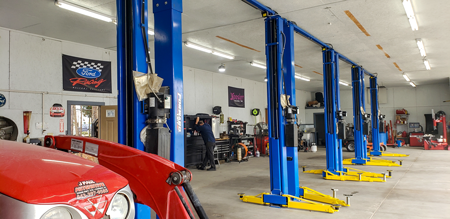Featured
2 of the most essential tire services are tire rotation and positioning. If you're strange with what tire turning and placement require, here's a comprehensive appearance at why they matter and just how they profit your automobile.
What Is Tire Turning? Tire turning refers to relocating your tires from one placement to an additional to ensure they use uniformly. The reason tire rotation is necessary is because not all tires use the same means. In front-wheel-drive automobiles, for instance, the front tires take care of both guiding and power, which makes them wear faster than the back tires. Likewise, the back tires put on in different ways in rear-wheel-drive and all-wheel-drive cars.
By turning your tires routinely, you can balance out the wear across all four tires. This helps them last longer and permits even more also traction, boosting handling and stability. Many producers suggest revolving your tires every 6,000 to 8,000 miles or as per the automobile's handbook.
What Is Tire Alignment? Tire alignment, likewise called wheel positioning, describes the procedure of readjusting the angles of your automobile's wheels to meet the manufacturer's specs. The objective of placement is to make sure that all four tires are directing in the best direction and at the proper angles, which allows for optimal handling, safety and security, and tire life.
There are three main placement angles that are changed during a placement check:

Camber: The tilt of the wheels when checked out from the front. If the camber is off, it can result in irregular tire wear, as the tire will certainly not make full call with the road surface area. Wheel: The angle of the steering axis when seen from the side. Proper wheel alignment makes sure that your car is stable when driving straight which your wheel go back to its typical setting after a turn. Toe: The angle at which the tires aim internal or outside when viewed from above. Incorrect toe placement can create the tires to drag, resulting in uneven wear and decreased gas efficiency. Imbalance can occur with time as a result of typical driving or from striking obstacles like visuals or holes. If your alignment is off, it is very important to obtain it inspected and dealt with to prevent concerns in the future.
Why Tire Rotation and Alignment Issue. Increased Tire Life:. Normal tire turning makes sure also tire wear, helping you obtain the most gas mileage out of your tires. Irregular wear can create you to replace tires too soon, which can be costly. When your tires use uniformly, they last much longer, saving you money in the long term.
Enhanced Automobile Handling:. Correct positioning keeps your lorry driving straight and secure, especially at greater speeds. Misalignment can create your auto to draw away, making it harder to steer. By maintaining your tires lined up, you guarantee your automobile manages much more efficiently and predictably.
Boosted Safety:. Tires that are not rotated or aligned appropriately can wear erratically, affecting just how well your car stops and edges. As an example, misaligned tires or tires with unequal wear patterns might cause minimized grip, specifically in wet or icy problems, causing a greater threat of crashes.
Better Gas Performance:. Tires that are misaligned can produce rolling resistance, implying your engine has to function more challenging to relocate the car. This increases fuel consumption and reduces your auto's gas effectiveness. Correct tire positioning lowers rolling resistance, which can enhance gas mileage.
Indicators Your Tires Required Rotation or Alignment. While it's vital to remain on top of regular tire rotations and positionings, there are a couple of indications that may suggest your tires require interest:
Unequal Put On: If you notice that a person tire is more used than the others, it's most likely time for a rotation. Steering Pull: If your vehicle pulls to one side or feels off-center, maybe a sign of misalignment. Resonances: If you really feel vibrations in the steering wheel or the vehicle, maybe because of a placement concern. Noisy Tires: Squealing or loud tires can indicate improper turning or imbalance. If you notice any one of these signs, it is necessary to get your tires examined by an expert.
How Commonly Should You Revolve and Straighten Your Tires? Tire rotation need to usually be done every 6,000 to 8,000 miles, though this can differ based on your driving conditions and the type of car you drive. It's also a great idea to have your tires revolved whenever you obtain an oil change.
For positioning, you need to have your tires straightened every 1-2 years, or a lot more frequently if you see any kind of issues with handling or irregular tire wear. If you struck a huge gap or curb, it's smart to get an alignment check today.
Verdict: Normal Upkeep for Ideal Performance. Tire rotation and positioning are 2 basic yet essential solutions that keep your automobile running efficiently, successfully, and securely. By revolving your tires regularly and maintaining your wheels appropriately aligned, you can expand the life of your tires, boost handling, and take pleasure in better gas effectiveness. Don't await your tires to reveal signs of wear-- timetable routine maintenance to keep your cars and truck in leading shape. Routine tire care is an investment that settles in the lengthy run, keeping you and your travelers secure when traveling.
Latest Posts
Find Out the Montclare Expertise - Professional Auto Repair
Introducing the Professionals Behind Montclare Auto Repair - Experience You Can Rely On
Professional Auto Repair Near You - Trust Montclare’s Auto Specialists
More
Latest Posts
Find Out the Montclare Expertise - Professional Auto Repair
Introducing the Professionals Behind Montclare Auto Repair - Experience You Can Rely On
Professional Auto Repair Near You - Trust Montclare’s Auto Specialists